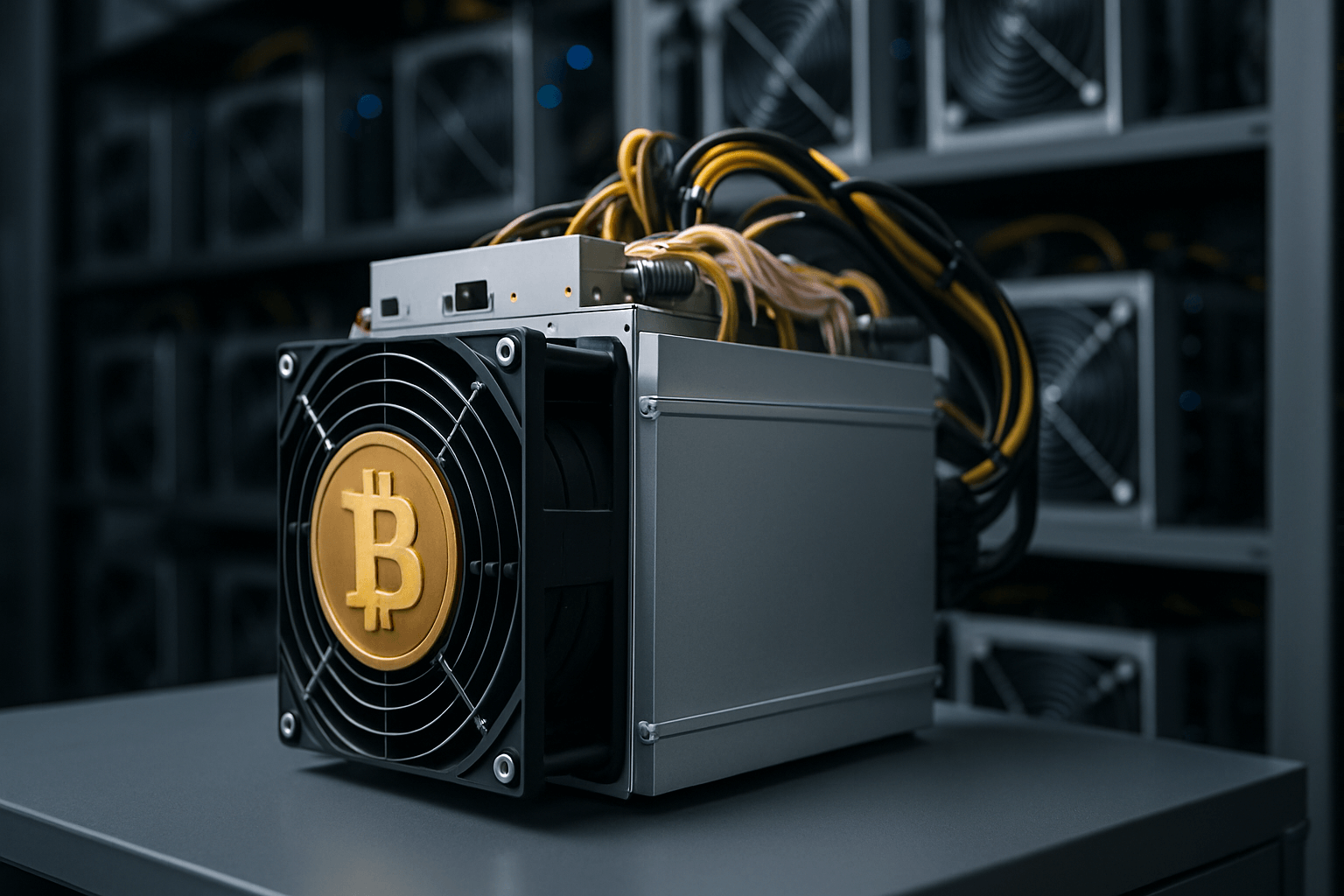Borrowing
Ultimate Guide on "How Does DeFi Lending Work"
October 03, 2023
Borrowing
October 03, 2023

Unlock the power of your cryptocurrency assets by leveraging them for borrowing. This guide explores how digital collateral is changing the borrowing landscape.
In the world of finance, the age-old practice of secure lending and borrowing has traditionally been the domain of banks and established financial institutions. Whenever individuals required a loan, mortgage, or credit, they knew to turn to their trusted banks. However, DeFi, or Decentralized Finance, has revolutionized the world of financial lending & borrowing.
In this article, we'll take a look at how DeFi borrowing works and cover everything you need to know to take out your first loan against crypto assets. Let's get to it!
The first step in borrowing from a DeFi protocol is selecting the right platform. DeFi is a rapidly evolving space with numerous protocols to choose from.
Each DeFi protocol has its own features, interest rates, and benefits, so when evaluating DeFi protocols, consider factors such as
The supported collateral assets and assets you can borrow
Liquidation thresholds and repayment schedules
The security and reputation of the protocol
The user interface and ease of use of the protocol
Some of the most popular and reputable protocols are Aave, Compound, and MakerDAO. However, these are just some examples of DeFi protocols that you can use to borrow crypto assets.
Related Article: The Top DeFi Protocols for Borrowing: Compound, Aave, and MakerDAO
In DeFi lending, all loans are over-collateralized, so collateral plays a pivotal role. In order to borrow funds, you need to decide which assets you want to use as collateral.
Generally speaking, collateral assets are locked up in a smart contract and used to secure your crypto backed loan. For example, you may lock up Ethereum (ETH) as collateral and borrow USDC.
The main factors that determine which assets you can or want use as collateral and which assets you can or want to borrow are:
Availability: Not all protocols support all assets. You need to check if the protocol you choose has the asset you want to borrow/use.
Liquidity: Liquidity refers to how easily an asset can be bought or sold in the market without affecting its price. Assets with higher liquidity are usually more stable than newer coins that have not yet found wide adoption.
Interest Rates: As with traditional finance, interest rates in DeFi are the cost of borrowing an asset. A higher interest rate for borrowed assets means you will incur more interest, so it's critical to consider this cost before you take out a crypto loan.
DeFi even allows you to borrow multiple assets using a single token as collateral. So if you've got COMP and you want to borrow both USDC and ETH, you can do it all in one loan.
It's critical to understand the various terms and keywords related to crypto loans.
Before taking out a loan, the following are the loan terms you should understand:
Loan-to-Value Ratio (LTV): LTV is the ratio of the amount of money you borrow to the value of your collateral. For example, if you lock up $100 worth of ETH and borrow $50 worth of USDC, your LTV is 50%. LTV determines how much you can borrow with your collateral. Different protocols have different LTV limits for different assets. Generally speaking, lower LTV means lower risk of liquidation but also lower borrowing power.
Liquidation Threshold: The liquidation threshold is the LTV at which your collateral will be liquidated. For example, if the liquidation threshold for ETH is 75%, your collateral will be liquidated if your LTV meets or exceeds 75%. During liquidation, your collateral will be automatically sold to repay your debt.
Interest Rates: The interest rate is the cost of borrowing an asset. Interest rates can be either fixed or floating. A fixed interest rate means that the rate is constant and does not change over time. A floating interest rate means that the rate changes periodically based on market conditions. Different protocols have different interest rates for different assets and some offer fixed interest rates for fixed-term loans.
You should understand the loan terms of the protocol that you choose and make sure that they match your risk appetite. You should also monitor the market conditions and the protocol parameters regularly to avoid any unpleasant surprises or losses.
We've touched on this a bit already, but let's dive deeper into the rabbit hole of interest rates.
Floating interest rates in DeFi are similar to variable interest rates in traditional finance, except that they can change much more often as they are typically based on aggregate borrowing demand. Fixed interest rates, on the other hand, are interest rates that stay the same throughout the duration of the loan.
So, one of the most important factors to consider when borrowing from a DeFi protocol is whether to choose a floating rate or a fixed interest rate. Both have their advantages and disadvantages, depending on your preferences and expectations.
A floating interest rate changes periodically based on market conditions, such as supply and demand of the borrowed asset, volatility, and liquidity. A floating interest rate can be advantageous if you expect the market conditions to improve in your favour, meaning that the interest rate will decrease over time. However, a floating interest rate can also be disadvantageous if you expect the market conditions to worsen against you, meaning that the interest rate will increase over time.
A fixed interest rate does not change over time and remains constant throughout the duration of the loan. A fixed interest rate can be advantageous if you want to have predictability and stability in your payments, regardless of market conditions. However, a fixed interest rate can also work against you if you miss out on potential savings or earnings from changing market conditions. Some protocols offer fixed interest rates with no defined loan term while others require repayments after a specified period.
The choice between a floating rate or a fixed interest rate depends on your risk appetite, time horizon, and market outlook.
The final step when borrowing from a DeFi protocol is to connect your externally owned account (EOA) to the protocol's website or app.
An EOA is a blockchain account, often known as a crypto "wallet" that you control with your own private key which allows you to sign transactions and interact with smart contracts. One of the most popular EOA wallets is MetaMask. MetaMask is a browser extension and mobile app that allows you to store and access your crypto assets, as well as connect to various DeFi protocols and web3 applications.
To use MetaMask, you need to download it from the official MetaMask website or a mobile app store and follow the instructions to create an account or import an existing account. You will also need to back up your seed phrase, which is a set of 12 words that can restore your account in case you lose access to it.
Once you have MetaMask installed and set up, you can connect your MetaMask wallet to any DeFi protocol. By connecting to DeFi loan protocols such as Compound or Aave, you will be able to take out loans against the crypto assets in your wallet.
Borrowing from a DeFi protocol can be a great way to leverage your crypto assets, access liquidity, hedge against volatility, or take advantage of arbitrage opportunities. However, it also involves certain risks, such as liquidation, smart contract bugs, or regulatory uncertainty.
Therefore, it is important to do your own research, understand the terms and conditions of each protocol, and use caution when borrowing. If you are looking for an easy and convenient way to borrow from DeFi protocols without having to deal with complex interfaces, externally-owned accounts, or nuanced technical details, you should check out Rocko!
Rocko is a new platform that enables crypto owners to easily and securely borrow from popular DeFi protocols like Aave, Compound, and Morpho and get funds in minutes — no experience needed! Use the loan to purchase real estate, pay down higher-rate debt, make everyday purchases, and much more.
Rocko also provides a loan management dashboard and tools like text and email alerts to help manage your loan and collateral. The Rocko team consists of experienced crypto enthusiasts who are ready to help you with any questions you may have. You can join the Rocko Discord server, follow our Twitter account, or visit our resource center to learn more about DeFi borrowing.
Sign up for Rocko and get a loan today!
Rocko does not guarantee the reliability of the Site content and shall not be held liable for any errors, omissions, or inaccuracies. The opinions and views expressed in any articles on rocko.co are solely those of the author(s) and do not reflect the opinions of Rocko. The information provided on the Site is for informational purposes only, and it does not constitute an endorsement of any of the products and services discussed or investment, financial, or trading advice. A qualified professional should be consulted prior to making financial decisions.

Rocko How-tos
Lock In Your Rate: How Kairos Swap Brings Fixed-Rate Lending to DeFi If you've ever borrowed against your crypto on Aave, Morpho, or similar…
September 15, 2025

Crypto & DeFi
Why Borrow Against Staked ETH? Liquid-staking tokens (LSTs) such as stETH, wstETH, cbETH and rETH let you keep earning staking rewards while…
June 17, 2025

Crypto & DeFi
Bitcoin Mining Loans: How to Fund Your Mining Business Bitcoin mining is the backbone of the Bitcoin network—a decentralized process where…
May 07, 2025